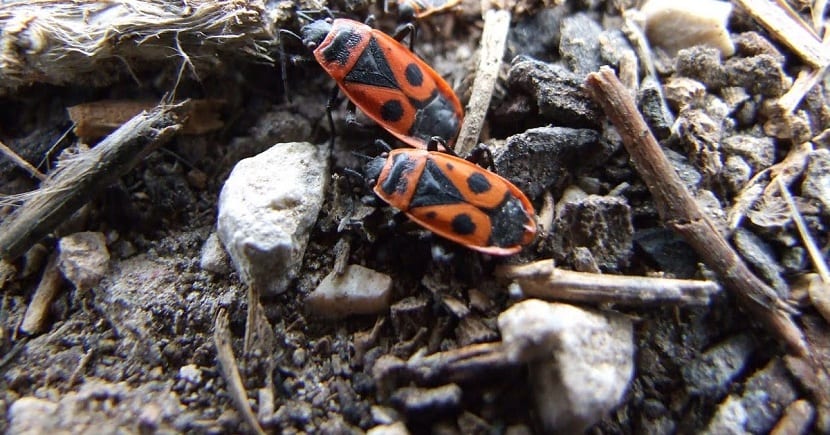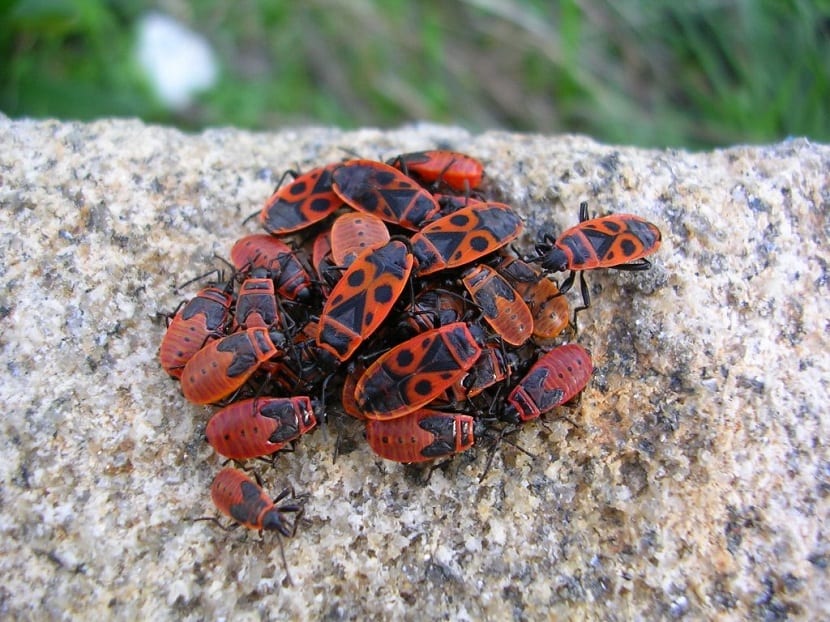
Today we come to talk about one of the pests that can affect your crops and garden. Its about cobbler bug or red bug. Its scientific name is (Pyrrhocoris apterus) and attacks olive trees, among other crops.
If you want to know their characteristics and the damage they do to your plants, keep reading.
Characteristics of the cobbler insect
It is a fairly common insect belonging to the Pyrrocoridae family. It is quite striking for its red and black coloration. They are distributed in many places. They are able to resist cold and also live in temperate climates.
The area of distribution is quite wide, being able to be found from the Atlantic coast of Europe to the northwest of China, including India, Central America, the United States and the United Kingdom. Its biological cycle does not exceed 2 or 3 months, but it does play pretty fast. They are sensitive to temperatures. Males are smaller than females. It is striking to observe them making their nests around plant debris or compost.
Crop damage

These insects do not properly harm plants, but they do use them as a guest. Being polyphagous insects, they feed on the seeds of plants, the corpses of other insects, other insects that are sick or weak and all this causes damage to crops.
For example, continuing with the example of the olive tree, we can find that in the middle of the olive harvest we find large quantities of these animals on the branches. When the tree is shaken to collect the olives, they fall, spoiling the harvest.
They can also feed on garden plants, in the event that their main food base is limited or that the number of individuals is very high, so it is not considered as a great threat to crops. They are totally harmless to humans.
I hope that with this information you get to know this insect and its possible damages better.
Hello Germán, I would not say that they are so harmless for our crops. A couple of weeks ago I planted some varieties of cabbages and planted arugula and radishes. These showy insects (there are also yellow ones) did not take long to attack the young shoots, leaving the leaves with holes, with yellow spots and they have completely weakened the young plants. The cabbages have not survived and the arugula looks deplorable. I do not want to use plant protection products to combat possible pests in my garden as I intend to grow organically. I am applying crop rotation with six beds but the pests are waiting for the next crop from the same families to jump to the other bed. I'd love to find a solution to at least limit the damage. A cordial greeting from Dénia